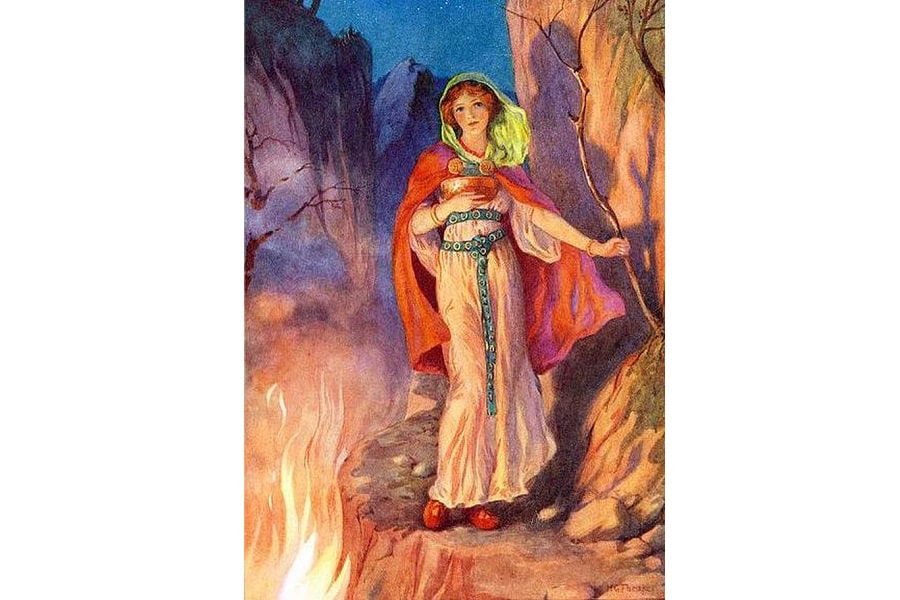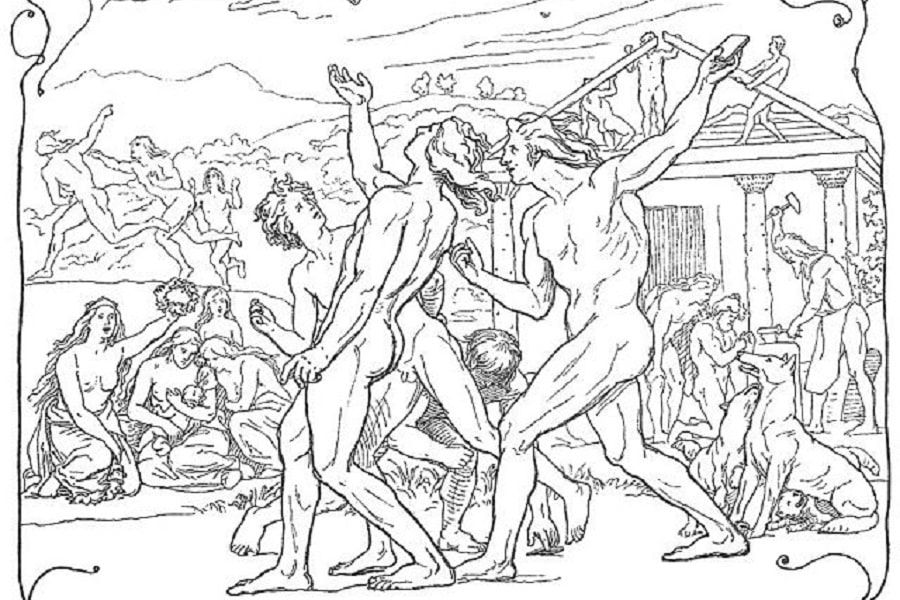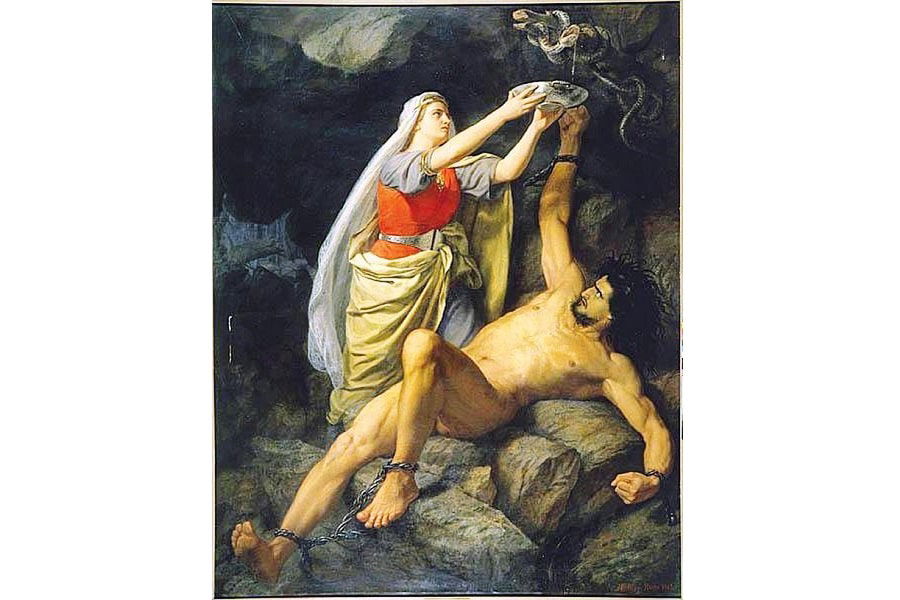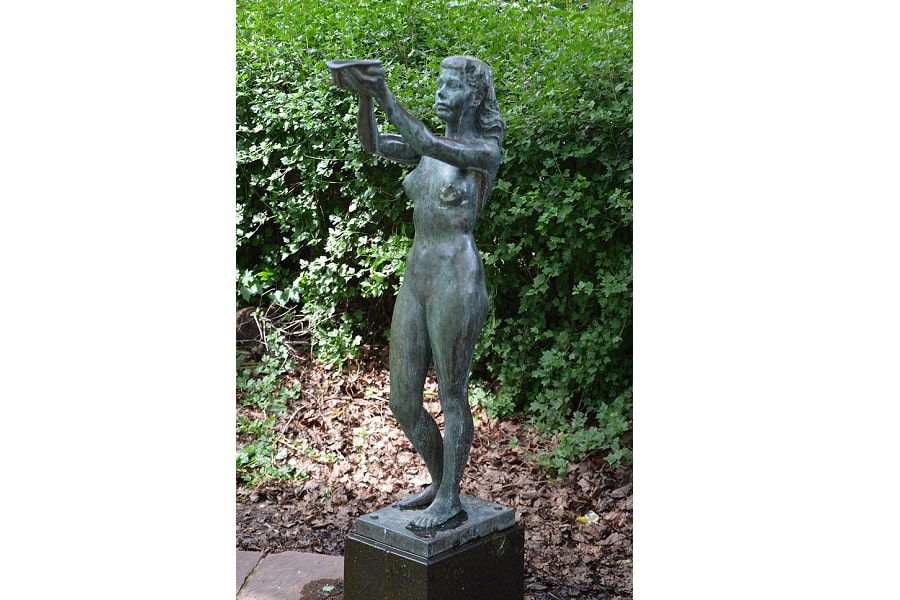Sigyn is a well-known figure in Norse mythology. She is a goddess associated with loyalty, devotion, and compassion and the wife of one of the most mischievous Norse gods – Loki.
Table of Contents
Who is Sigyn?

Sigyn is a Norse Goddess, the wife of the trickster god Loki. Her name means ‘friend of victory,’ or ‘giver.’ She is most famously known for faithfully soothing and serving her husband Loki in his punishment.
What is Sigyn the Goddess Of?
Sigyn can be safely interpreted to be a minor Norse goddess of compassion, faithfulness, and loyalty from the stories we know about her. There is no clear information in, written or oral sources, regarding Sigyn or her powers.
Sigyn’s Family
Sigyn belongs to the Aesir group of gods. She bore two sons to Loki – Narfi and Vali. She is the stepmother of Loki’s children with his first wife Angrboda – Hel, Fenrir, and Jormungandr – the harbingers of Ragnarok (the end of the world).

Sources
We get most of our information regarding Sigyn from the Prose Edda. She is introduced as an Aesir goddess, an asynja, in the Skáldskaparmál. From the book called Gylfaginning, we come to know that she is married to Loki and bears him two children – Narfi and Vali. The gods turn Vali into a wolf who later kills his brother Narfi. The gods take Narfi’s intestines and use them to tie Loki as punishment. The goddess Skadi places a venom-spitting snake above him and Sigyn joins his punishment chamber holding a bowl below the snake to prevent the venom from harming Loki. When the bowl is full, she empties it on the ground below. In those few moments, some venom falls on Loki who quivers in agony causing earthquakes. There are no mentions of Sigyn after Loki escapes from this prison.
The Poetic Edda describes that an unhappy Sigyn sits next to the hot springs with her bound husband. The 11th-century Gosforth Cross from England depicts several figures from Norse Mythology. The west side bottom portion shows a long-haired woman, kneeling and holding an object over another bound figure. Above them, on the left is carved a knotted snake.

Probable Pagan Roots
Although she appears only in a single role in Norse Mythology and the surviving Old Norse sources, where the name Sigyn is found as a feminine personal name (Old Norse sigr means “victory” and vina means “female friend”), she does appear in the pagan-era 9th-century skaldic poem Haustlöng by the skald jóólfr of Hvinir. Because of this early association with Loki, Sigyn has been theorized to be a goddess from an earlier era of Germanic paganism.
Understanding Sigyn
Although surviving sources confine her largely to a single, limited role, she appears in the ninth-century pagan skald poetry Haustlöng, written by the skald Þjóðólfr of Hvinir. Because of this early association with Loki, Sigyn is theorized as a deity dating back to older forms of Germanic paganism.
READ MORE: Pagan Gods from Across the Ancient World
There are three aspects to Sigyn: the devoted wife, the grieving mother, and the forgotten being. Sigyn loses her two sons to the grand sacrifice of the gods who believed that punishing Loki would knock some etiquette into him. In fact, the gods also make an enemy of Fenrir, her stepson in a similar manner. As a devoted wife, she not only diligently serves her husband but also does that despite his extramarital affairs. Thus, she teaches us about devotion, loyalty, and motherhood.
The third aspect of Sigyn is the most important. The forgotten being, Sigyn represents all the parts of ourselves that we have forgotten. In the social sense, it refers to the ones who have been outcast or marginalized, those that live on the fringes of settlements, and prisoners. Sigyn plays the role of a side character in her marriage, amongst the gods, and even in our collective memory about her. In the holistic or spiritual sense, Sigyn refers to our souls, symbolizing our True Nature, the one which we have forgotten and neglected.

Modern Influence
Sigyn nursing Loki has been a subject of notable paintings such as “Loke och Sigyn” (1850) by Nils Blommér, “Loke och Sigyn” (1863) by Mårten Eskil Winge, “Loki och Sigyn (1879) by Oscar Wergeland, and the illustration “Loki und Sigyn; Hel mit dem Hunde Garm” (1883) by K. Ehrenberg. Many objects and places have been named after her as well, worth mentioning of which are a Marvel comics character released in 1978, the Swedish vessel MS Sigyn that transports spent nuclear fuel (alluding to Sigyn holding a bowl beneath the venom to spare Loki), and a glacier in the Antarctic.
References:
- Daly, Kathleen (2010) – Norse Mythology: A to Z, 3rd ed., Chelsea House Publishers
- Simek, Rudolf (2007) translated by Angela Hall. Dictionary of Northern Mythology.
- Orchard, Andy (1997). Dictionary of Norse Myth and Legend.
- Byock, Jesse (Trans.) (2006). The Prose Edda. Penguin Classics.
- Faulkes, Anthony (Trans.) (1995). Edda
- Larrington, Carolyne (Trans.) (1999). The Poetic Edda.
- Simek, Rudolf (2007) translated by Angela Hall. Dictionary of Northern Mythology. D.S. Brewer.
- https://www.danishcanadianmuseum.com/post/loki-s-complicated-family#:~:text=Sigyn%20%E2%80%9CSig%2Din%E2%80%9D%20After,she%20was%20the%20goddess%20of.